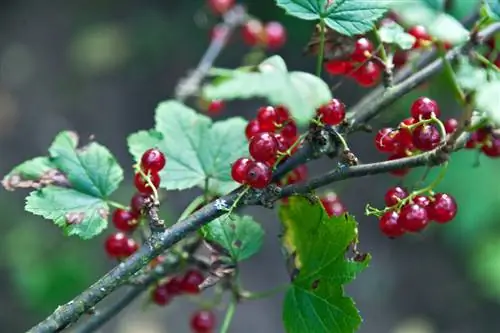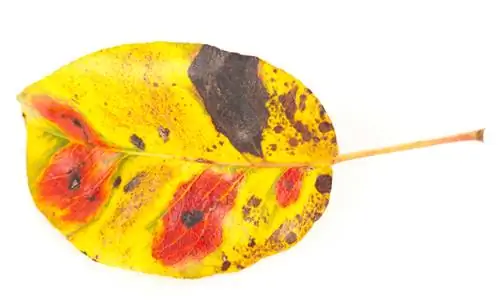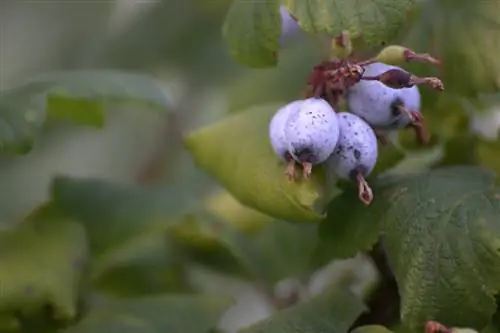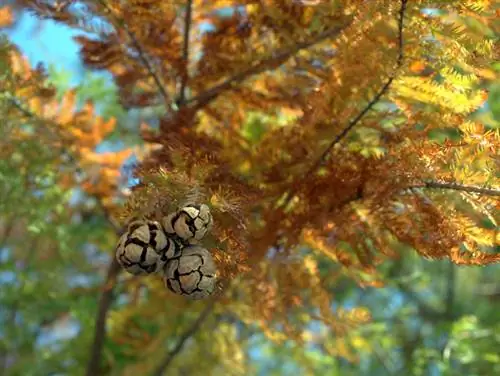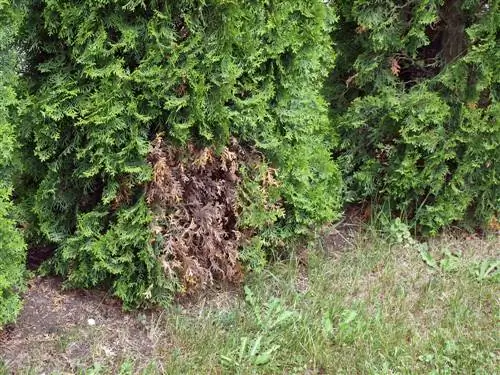- Author admin [email protected].
- Public 2023-12-16 16:46.
- Last modified 2025-01-23 11:20.
In a favorable location, red currants are easy to care for and rarely get sick. However, in humid summers and with poor care, fungal infestation or other diseases are more common. This is how you can tell what the red currant is missing.
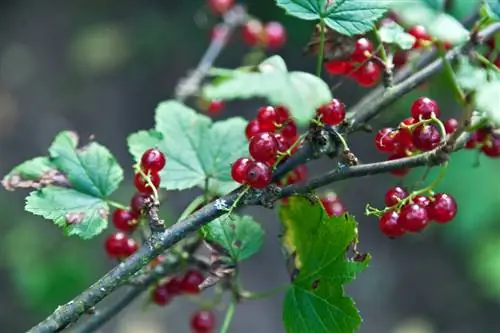
What diseases can affect red currants and how can they be prevented?
Red currants can be affected by diseases such as leaf drop disease, shoot dieback, nettle leaf disease, powdery mildew, columnar rust and Colletotrichum fruit rot. The causes are usually fungi, poor location or moisture. Prevention through good location, regular cutting and removal of infected plant parts is important.
Diseases common in red currants
Although the red currant is generally robust, poor location and too much moisture cause problems for it. In this case, fungal diseases are often observed. The most common diseases include:
- Leaf drop disease
- Instinct death
- Nettle leafiness
- Mildew
- pillar grate
- Colletotrichum fruit rot
Small overview of diseases
| Illness | Symptoms leaves | Symptoms of urges | Trigger | Treatment | Special features |
|---|---|---|---|---|---|
| Leaf drop disease | brown dots, curling up, falling off | Shoots sometimes brown | Mushrooms | Cut off shoots | after a wet spring |
| Instinct death | no leaf development | does not sprout, shoots die | various causes | Cut off shoots | frequent parasite infestation |
| Nettle leafiness | Leaf discoloration | few flowers | Gall midges | Cut off shoots | cut back heavily in autumn |
| Mildew | whitish coating | none | Mushrooms | cut affected parts | treat with diluted milk |
| pillar grate | red-orange pustules | none | Mushrooms | Cut off shoots | Cutting down pine trees in the area |
| Colletotrichum fruit rot | none | become brown and dry up | Mushrooms | Cut, treat with nettle decoction | Berries turn light and dry up |
There's not much you can do about column rust. The fungal spores overwinter in pine trees. To prevent red currant disease, all pine trees in the area would have to be felled.
Prevention is better than cure
To ensure that the red currant does not get sick in the first place, ensure it is in a good location. The soil should be neither too moist nor too dry.
Cut the red currant twice a year, once immediately after harvest and a second time in autumn.
Lighten the shrub well. This makes it more difficult for pathogens to spread.
Pests are also responsible for diseases
There are a number of pests that affect red currants. Therefore, examine the bushes at regular intervals. This makes it possible to effectively prevent severe infestations.
Tip
You should never dispose of diseased plant parts such as leaves, fruit mummies or cut shoots in the compost. This causes the diseases to spread to other, he althy plants. Throw the plant remains into the trash can or burn them if this is permitted in your area.

